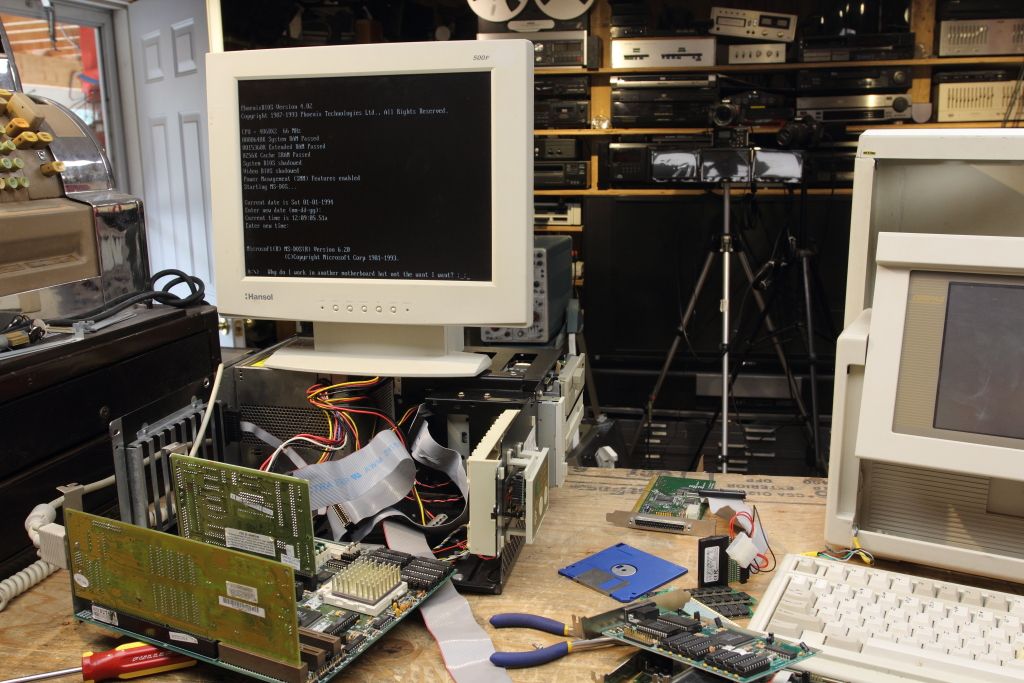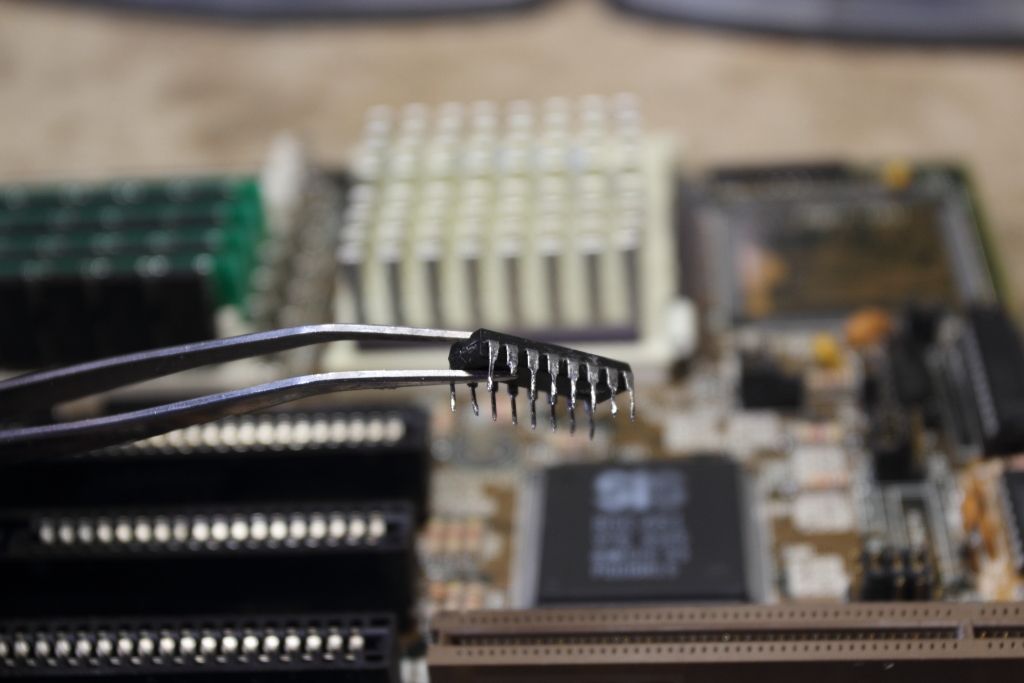NeXT
Veteran Member
So this machine I built will not boot form floppy. IT will boot from IDE if it wants to but first I need to floppy boot it to install DOS. 
Same as the DOM boot thread, ASUS ISA-486SV2 Rev. 3.1 and ISA combination floppy/IDE controller with the GoldStar PRIME 2 chipset. Both support 720k and 1.44mb floppy formats. Motherboard has a good battery and default CMOS configuration. Have tried two different floppy cables, have tried three other 3.5" floppy drives and I have both a 720K and 1.44mb floppy I have formatted and sys'd on another machine and verified they are bootable. This machine will not boot. It just says DISK BOOT FAILURE as soon as it tries to read from the floppy. That I can tell it's not corrupting or physically damaging the disks. I've also tried a different controller card with the same result. Have also tried with TURBO both turned on and off.
There's three cards in this machine. The Disk I/O card, the VLB video card and a tape drive controller (which I've removed for testing with no change)
Edited: As a test of my sanity I recabled the floppy drives and tried booting from a known good 360k 5.25" floppy. No change. I also rejumpered the motherboard as I had originally received and and swapped back in the 40mhz DX-40 I received it with. Still no go.
Same as the DOM boot thread, ASUS ISA-486SV2 Rev. 3.1 and ISA combination floppy/IDE controller with the GoldStar PRIME 2 chipset. Both support 720k and 1.44mb floppy formats. Motherboard has a good battery and default CMOS configuration. Have tried two different floppy cables, have tried three other 3.5" floppy drives and I have both a 720K and 1.44mb floppy I have formatted and sys'd on another machine and verified they are bootable. This machine will not boot. It just says DISK BOOT FAILURE as soon as it tries to read from the floppy. That I can tell it's not corrupting or physically damaging the disks. I've also tried a different controller card with the same result. Have also tried with TURBO both turned on and off.
There's three cards in this machine. The Disk I/O card, the VLB video card and a tape drive controller (which I've removed for testing with no change)
Edited: As a test of my sanity I recabled the floppy drives and tried booting from a known good 360k 5.25" floppy. No change. I also rejumpered the motherboard as I had originally received and and swapped back in the 40mhz DX-40 I received it with. Still no go.
Last edited:





